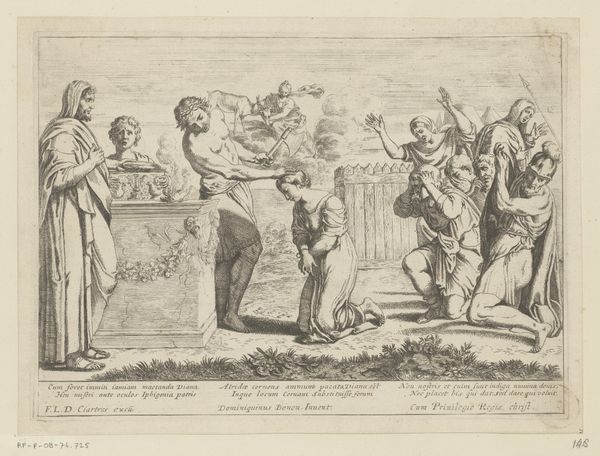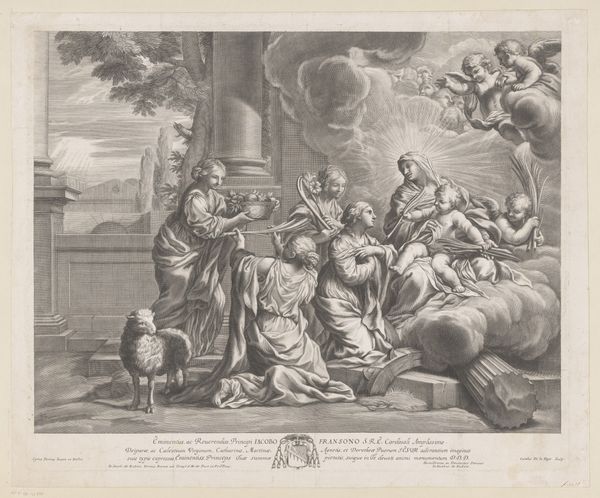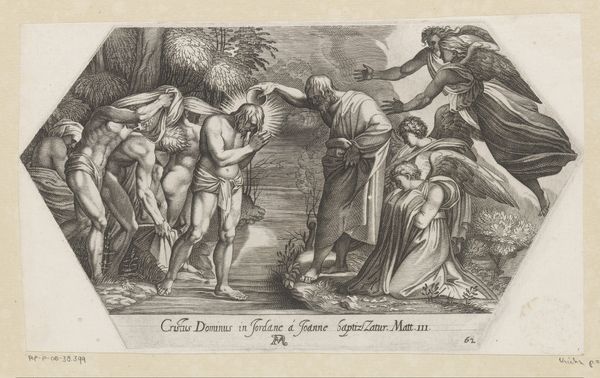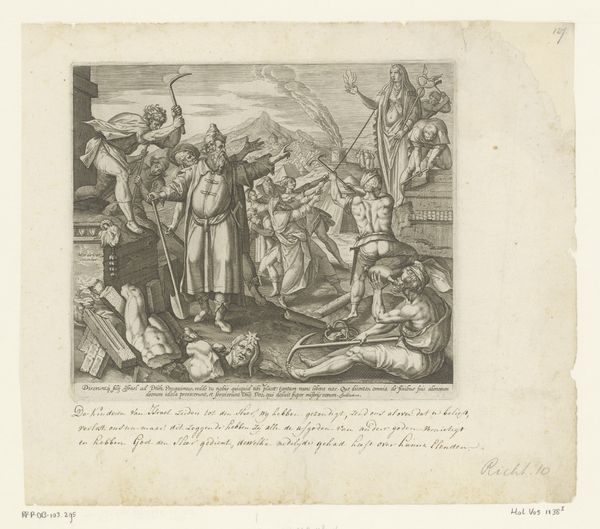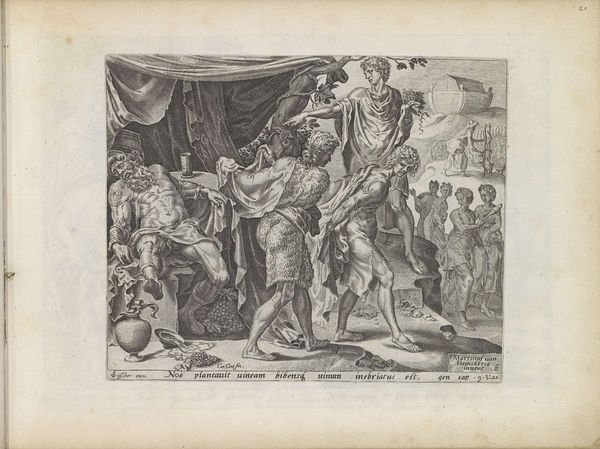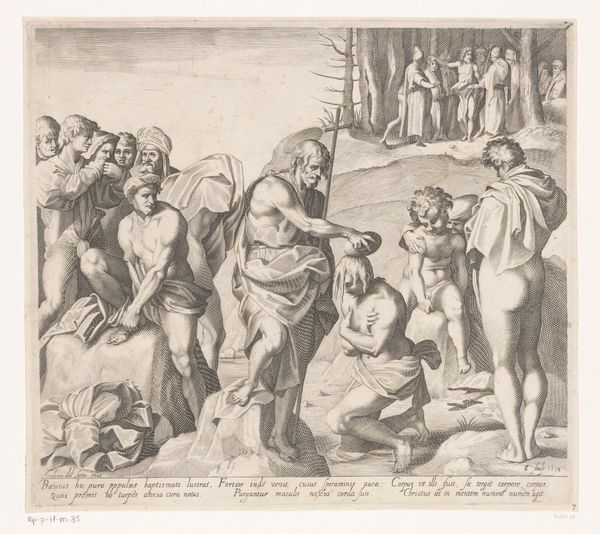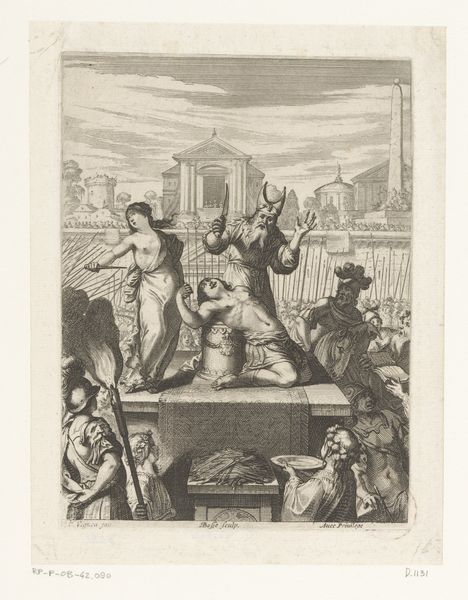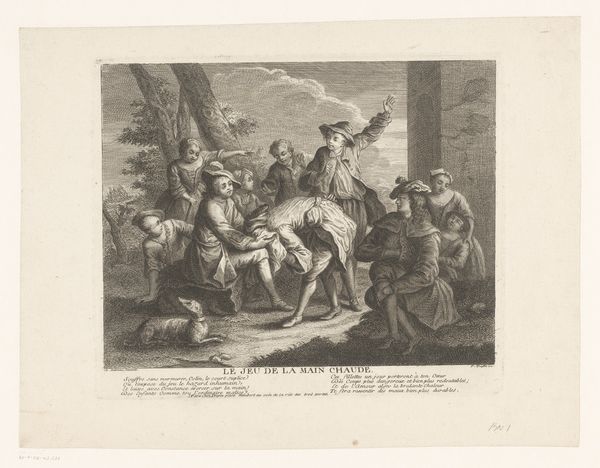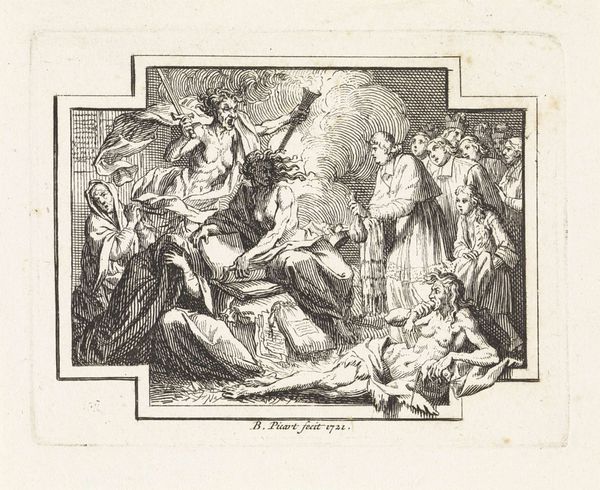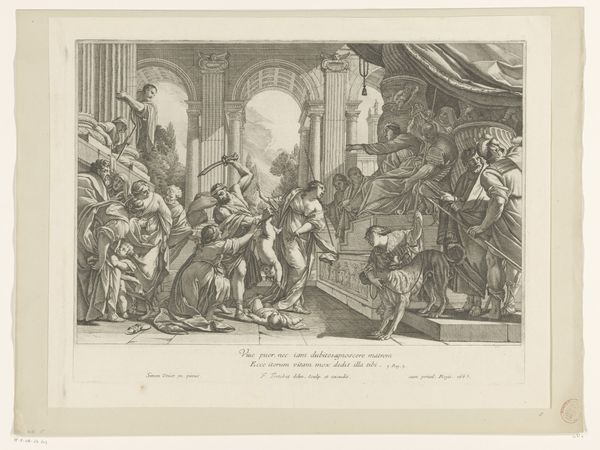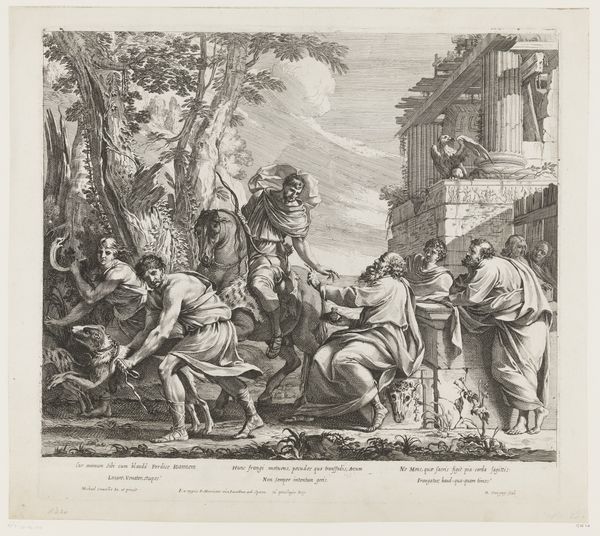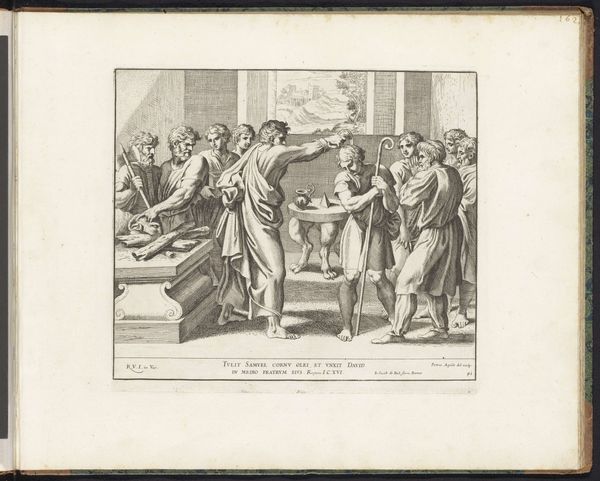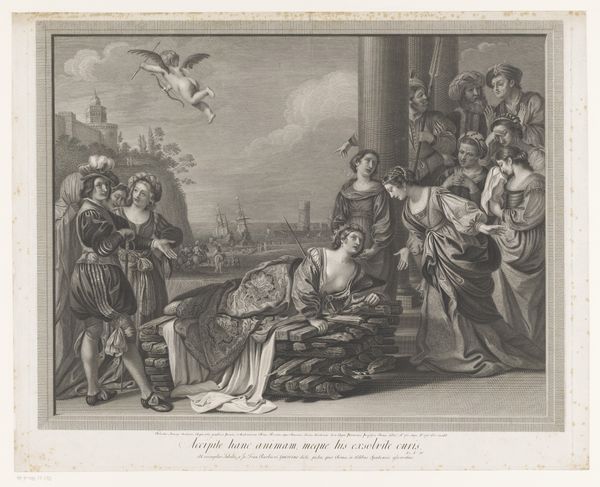
print, engraving
#
baroque
# print
#
old engraving style
#
figuration
#
genre-painting
#
history-painting
#
engraving
Dimensions: height 184 mm, width 186 mm
Copyright: Rijks Museum: Open Domain
Curator: We're looking at "Offer van Noach," or "Noah's Sacrifice," an engraving dating to 1626, by Francesco Villamena. What stands out to you initially? Editor: The sheer activity! The compressed space brims with figures and animals, all converging on that altar with the roaring flame. There's a powerful, unsettling energy emanating from it. Curator: Absolutely. Note the deliberate juxtaposition of life and death. Behind Noah, the saved animals symbolize renewed life, the promise after the flood, while in the foreground we witness the act of sacrifice itself. Consider, for a moment, that the lamb being brought to slaughter often acts as a symbol of Christ and redemption. What does it suggest about the perception of the role of sacrifice within the Abrahamic traditions, do you think? Editor: Well, I am intrigued by how tactile it all feels, rendered meticulously in engraving. You can almost feel the weight of the animals, the tension in the sacrificer's arms. The choice of printmaking allows for distribution, making this sacrifice visually available across early modern Europe, commodifying a religious concept almost. How do you interpret Noah's expression? Curator: His raised hands and gaze skyward clearly indicate supplication, but there is something removed about his placid face amidst the brutal act beside him, and perhaps this reveals a societal disconnect from the practice of sacrificial ritual in 17th century European culture. Note how those nearest the event shy away from looking directly, or even obscure their view. It perhaps reinforces the idea that this print allowed access to aspects of faith usually obscured. Editor: A calculated and unsettling arrangement. Seeing this abundance of texture makes me question the systems in place in art-making too. Who decides which images and stories deserve such careful material labour, to be etched into plates and circulated widely? This wasn't just devotion, it was production. Curator: Indeed. This wasn't simply an image, but a reproducible commodity that shaped beliefs. The potency of religious symbolism intertwined with artistic production reveals deeper societal undercurrents. Editor: It forces you to think about faith, commerce, labor… so much more than the image on the surface! Curator: Precisely. This small print speaks volumes about humanity's relationship with both the divine and the material world, and invites us to interrogate these themes.
Comments
No comments
Be the first to comment and join the conversation on the ultimate creative platform.
